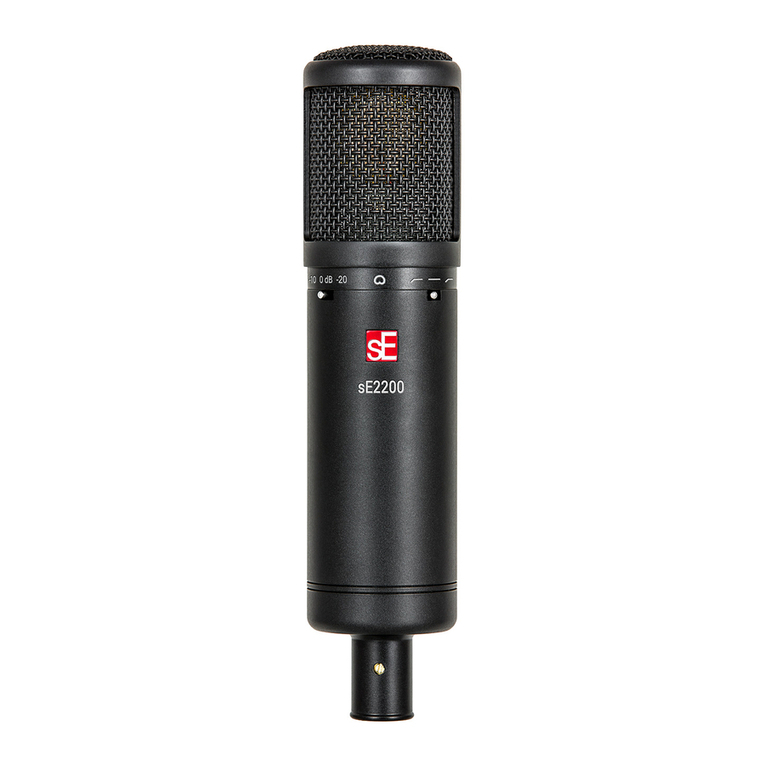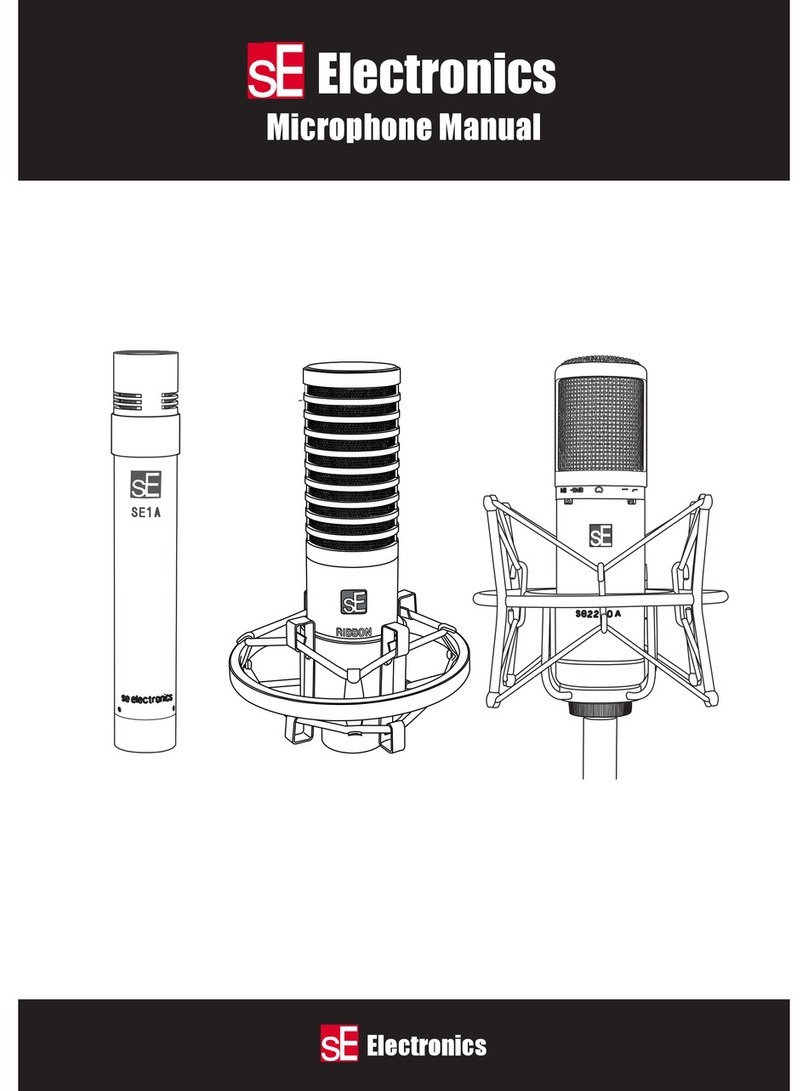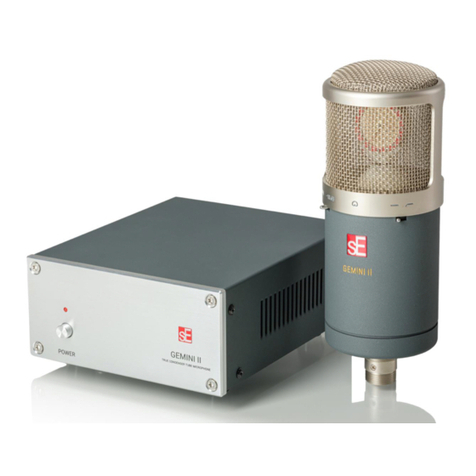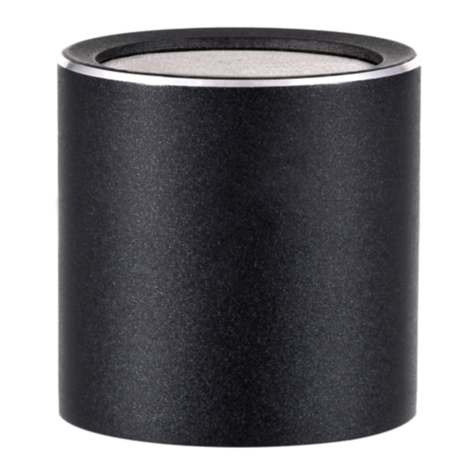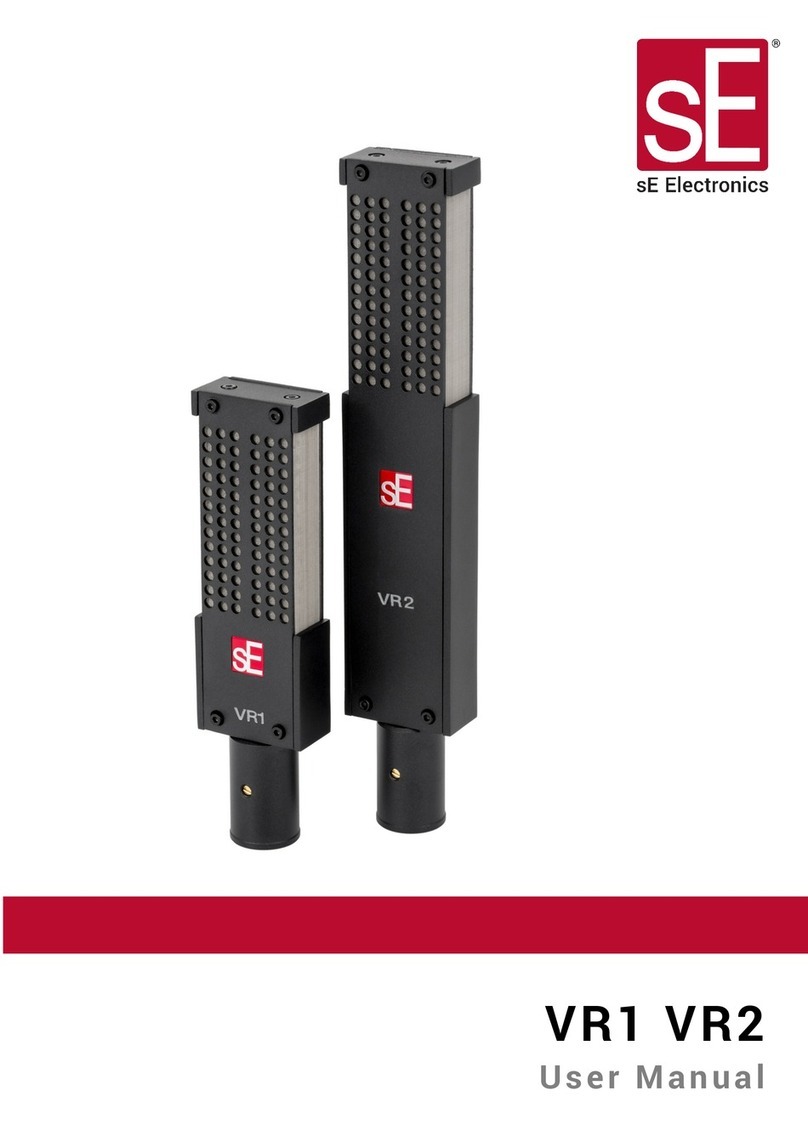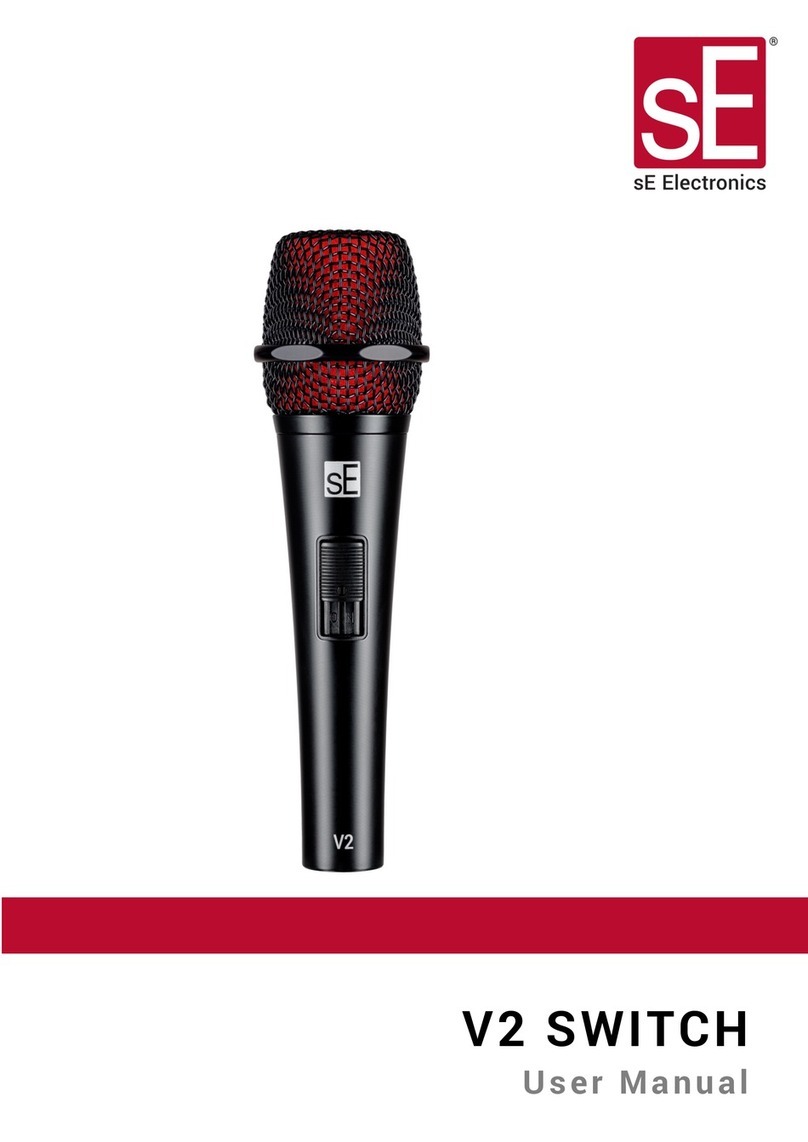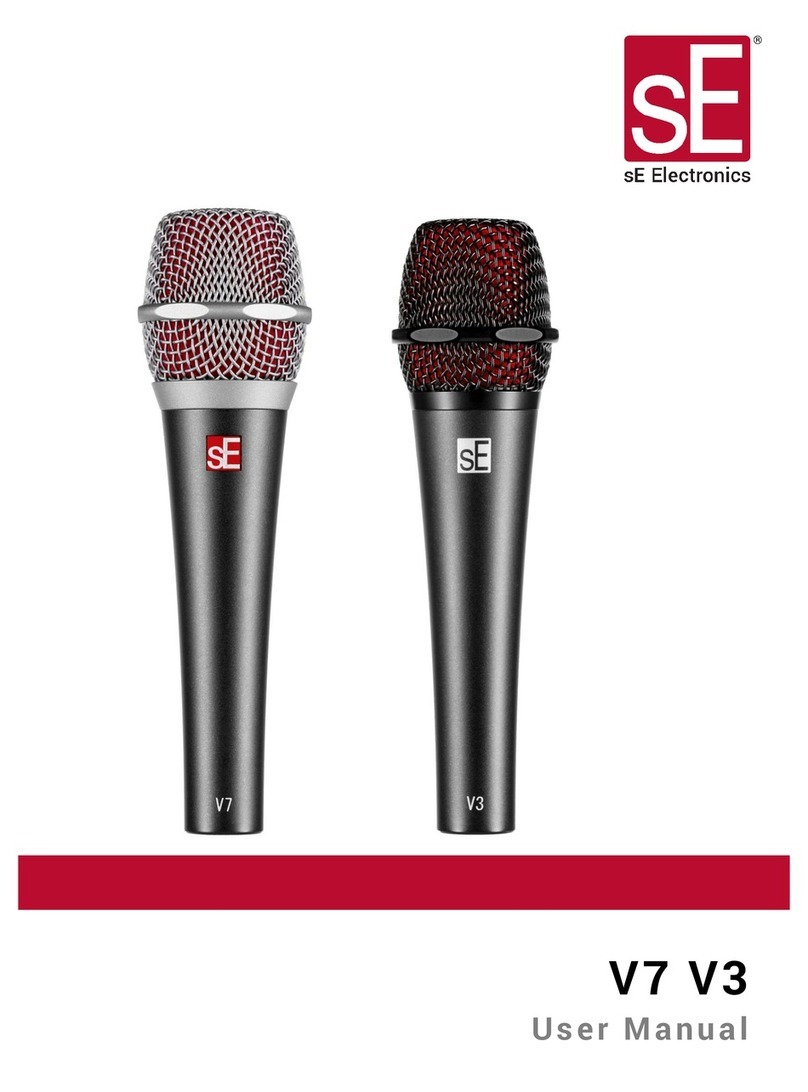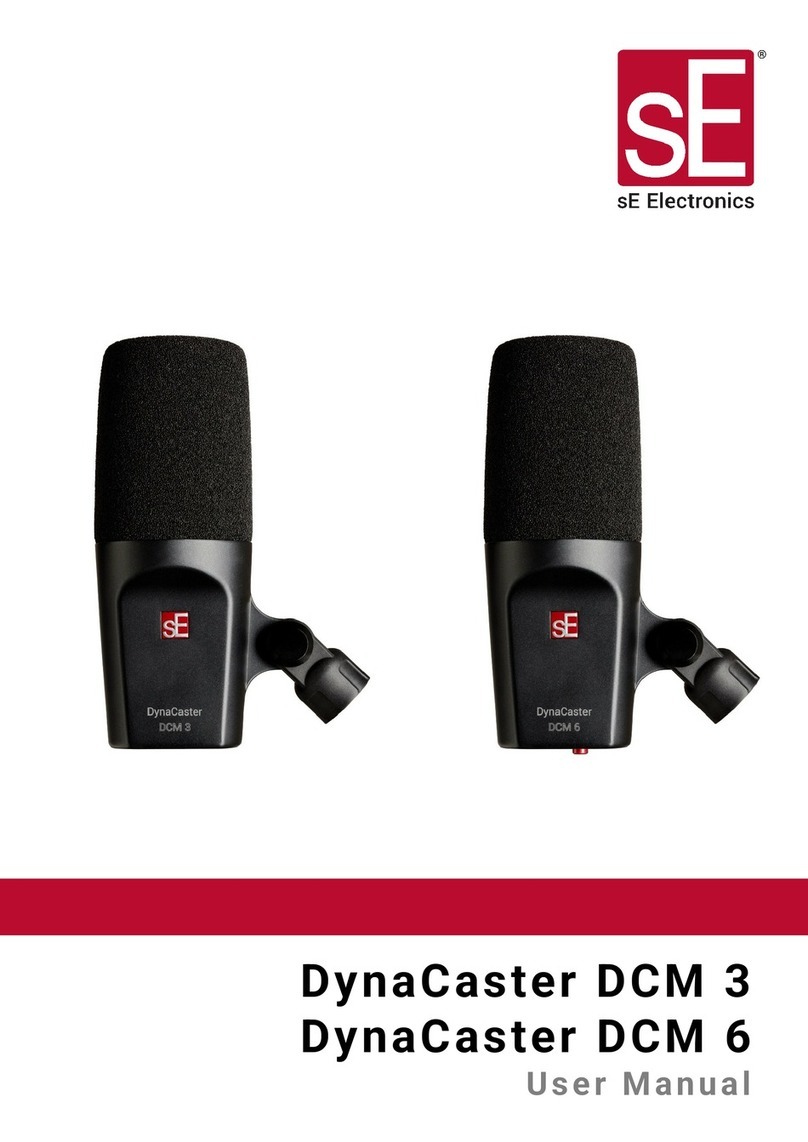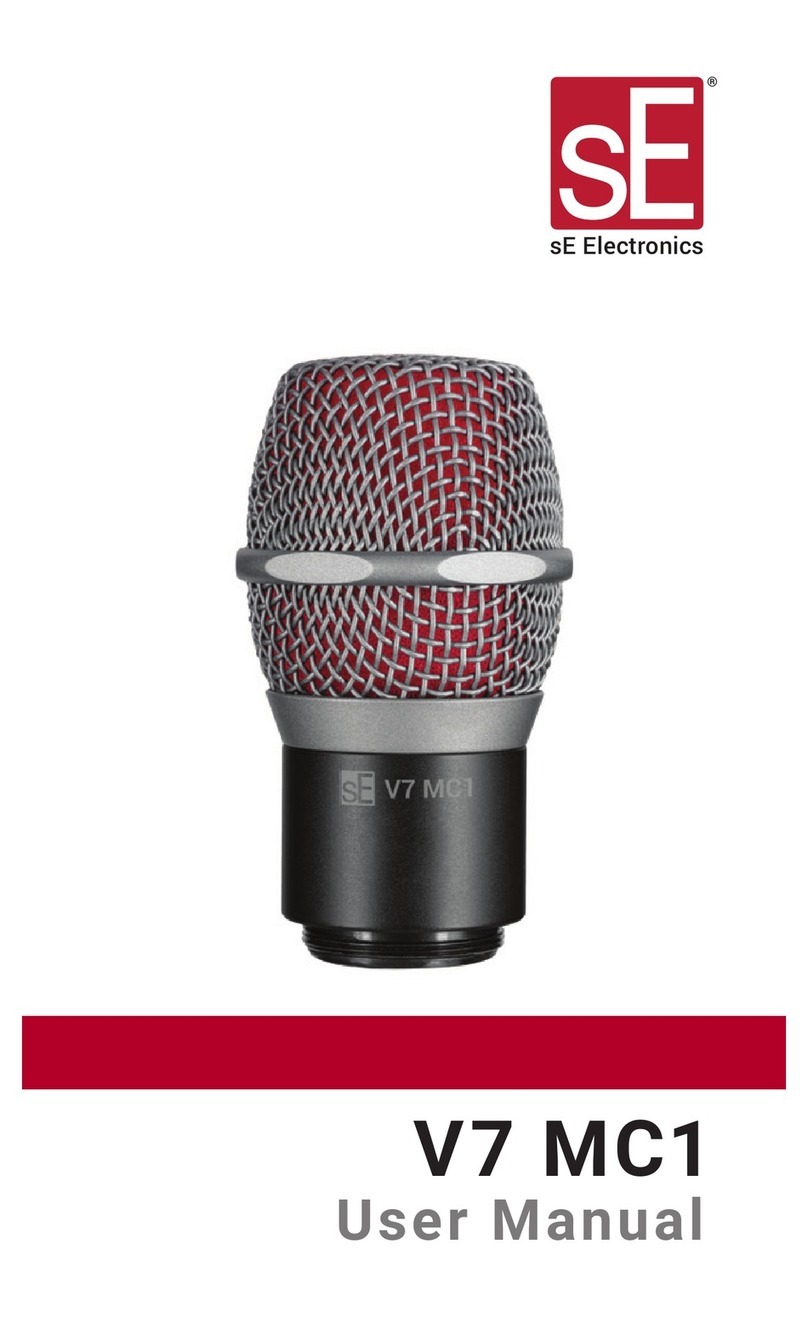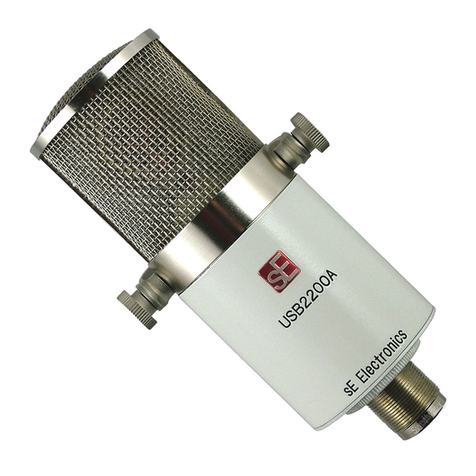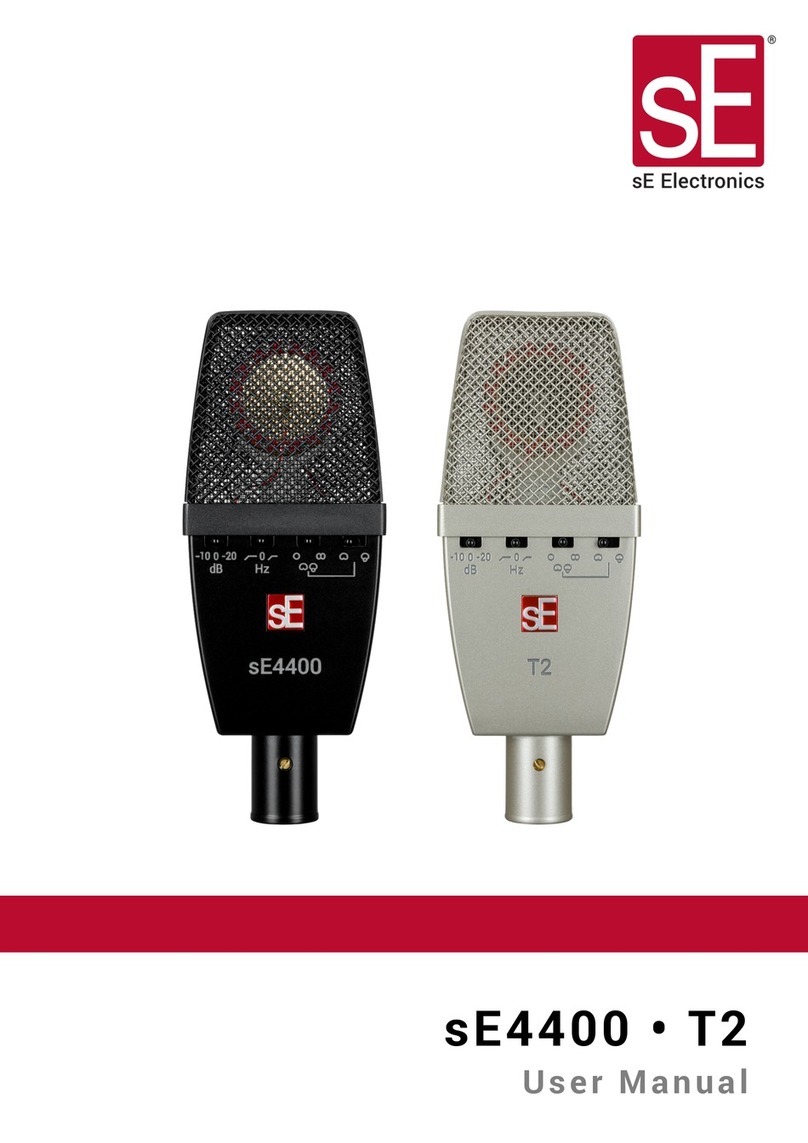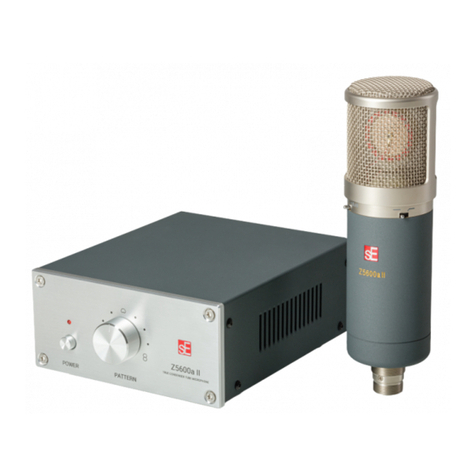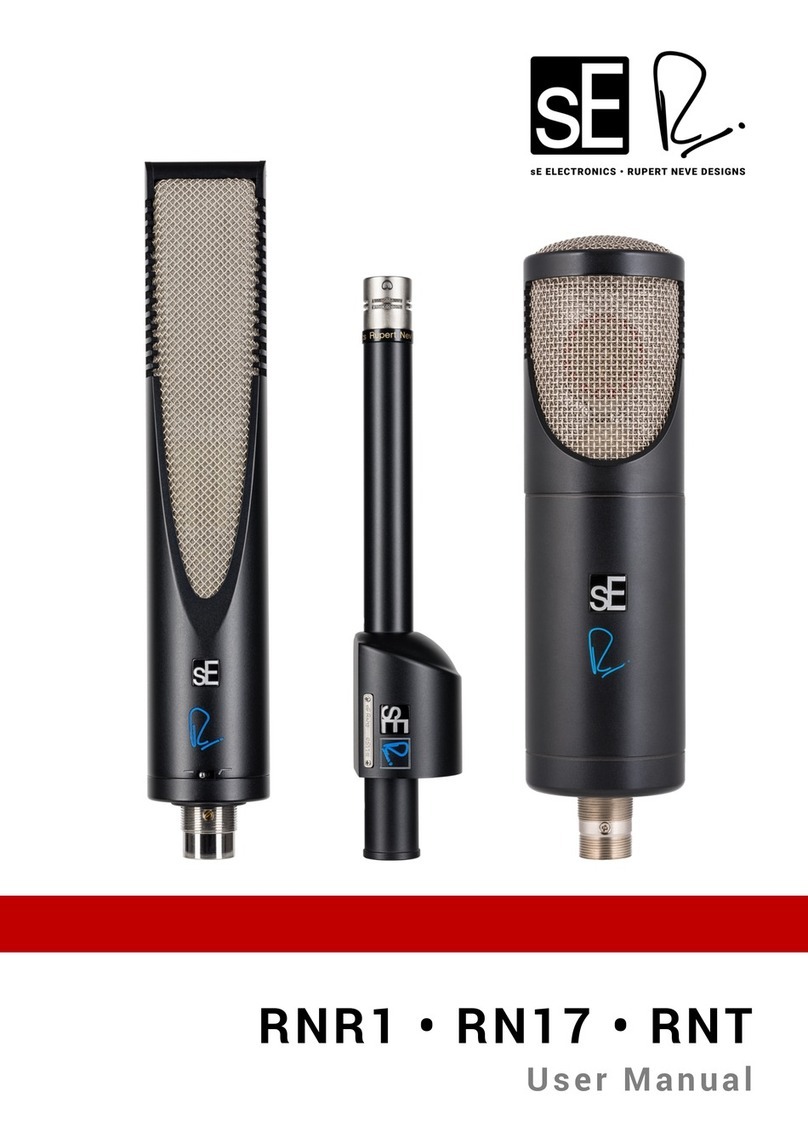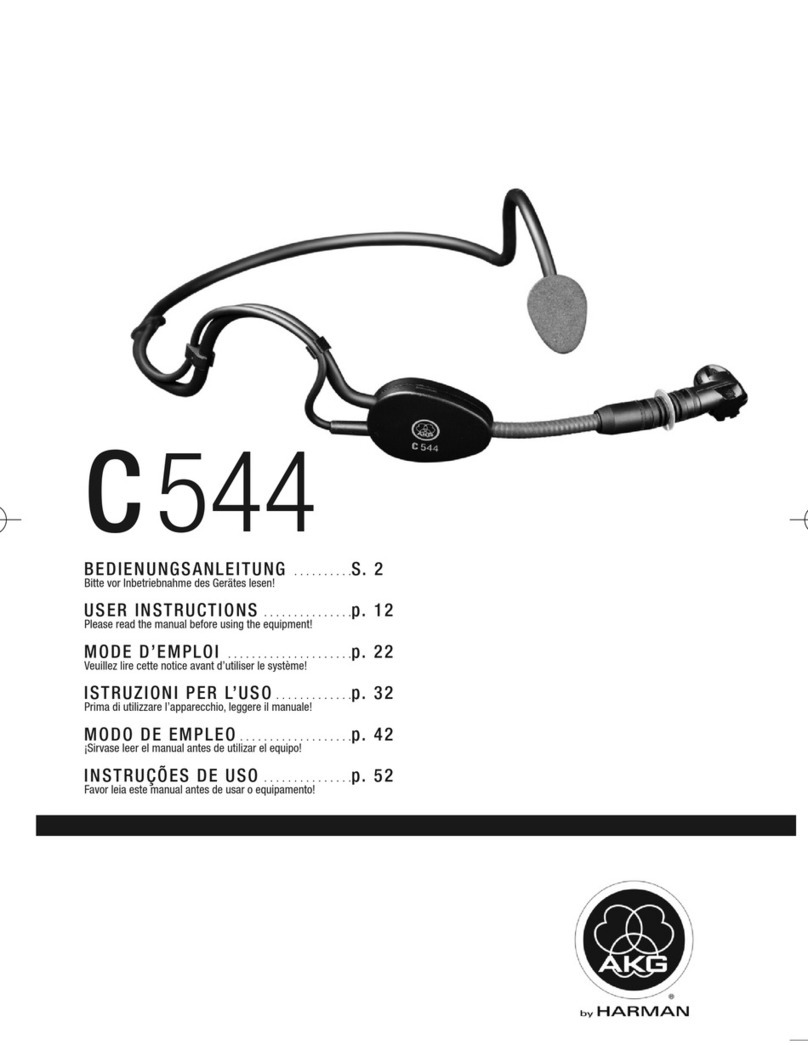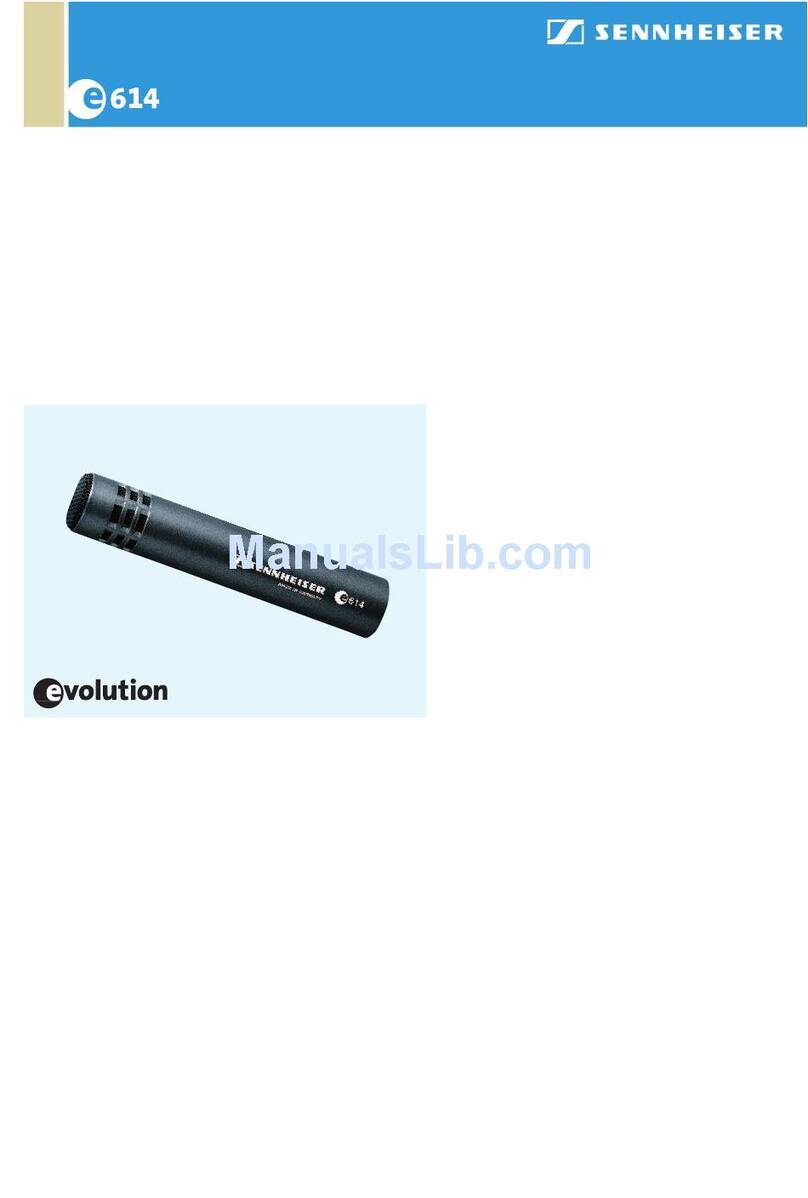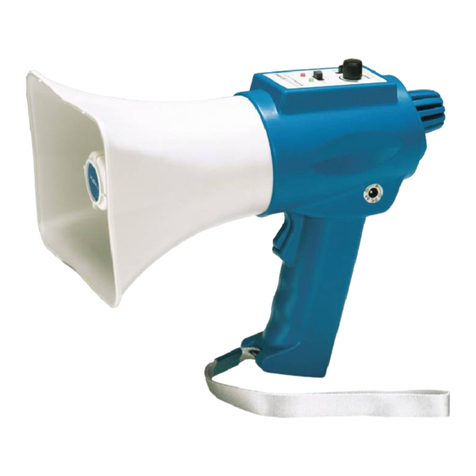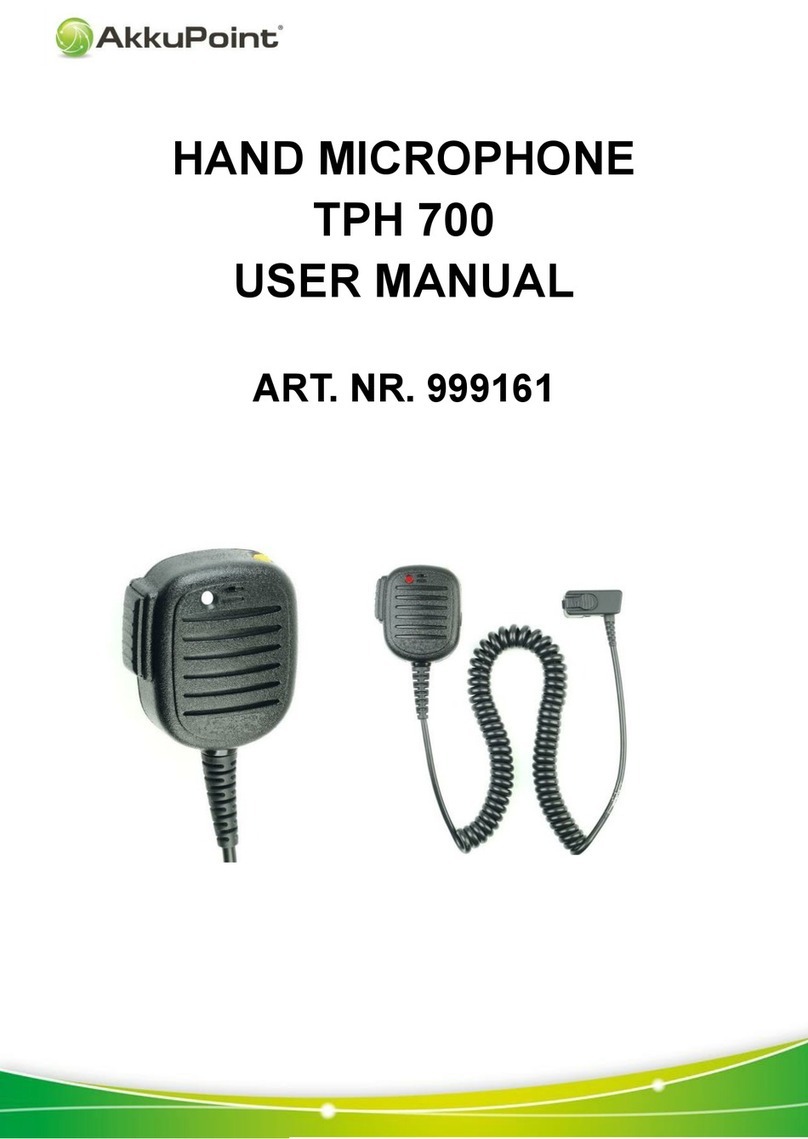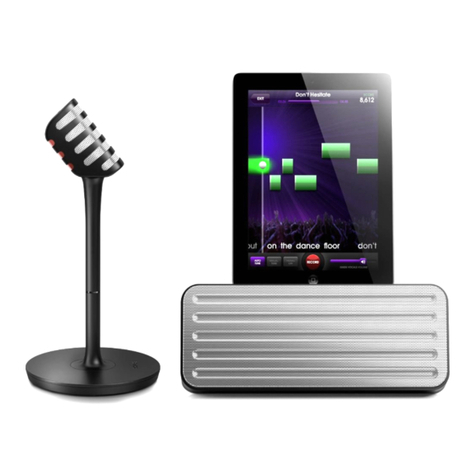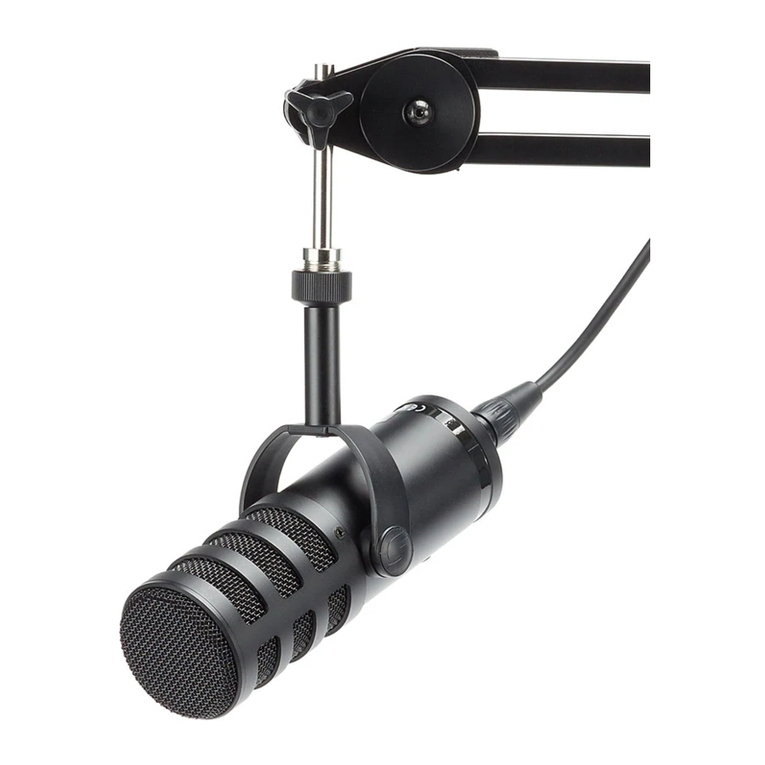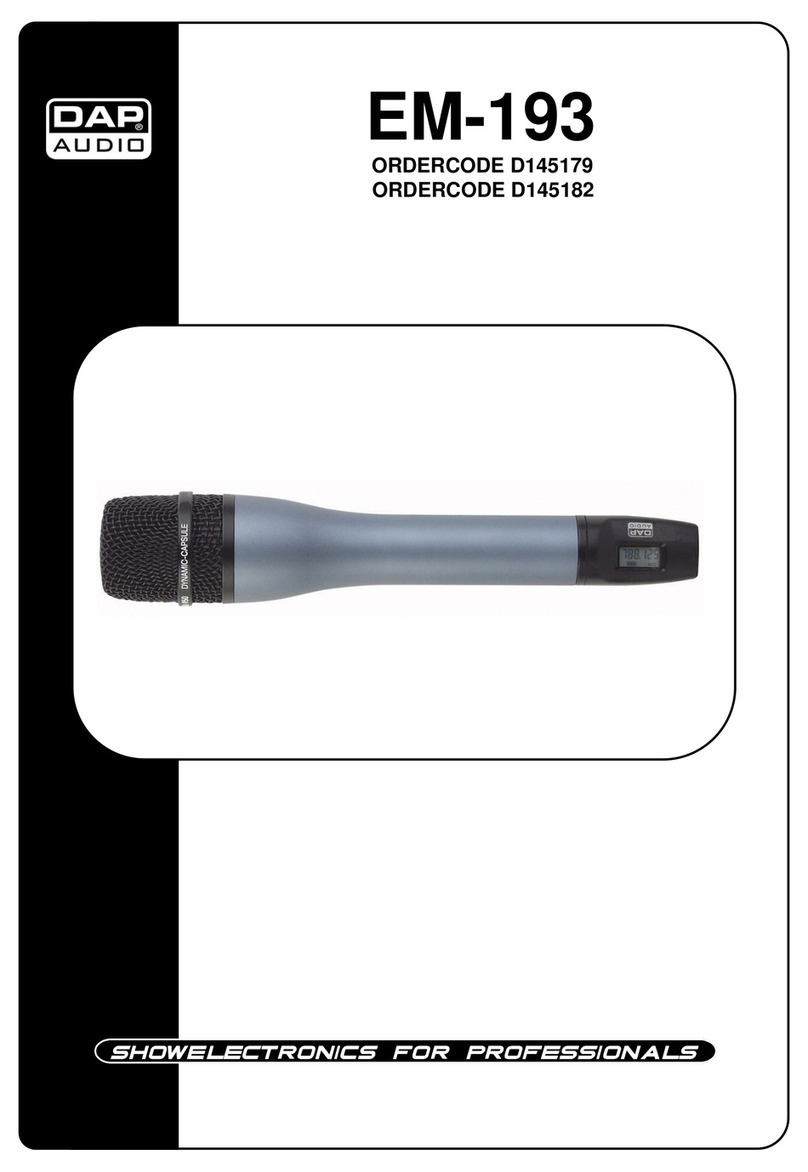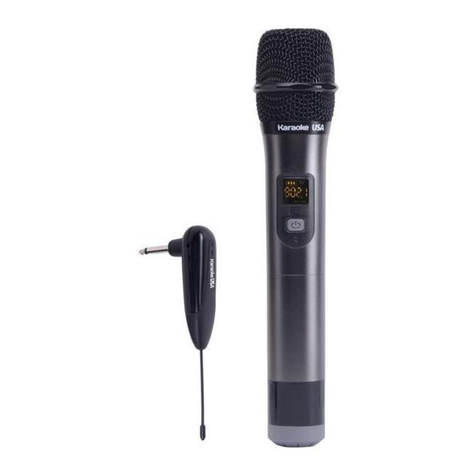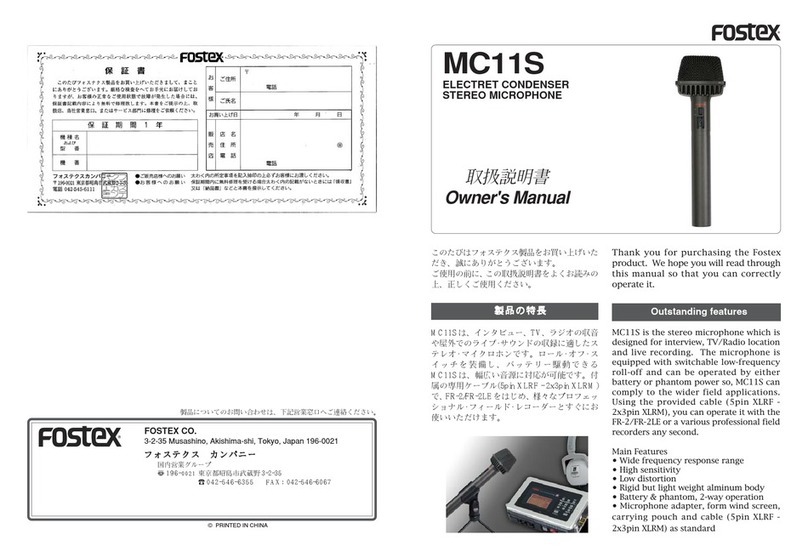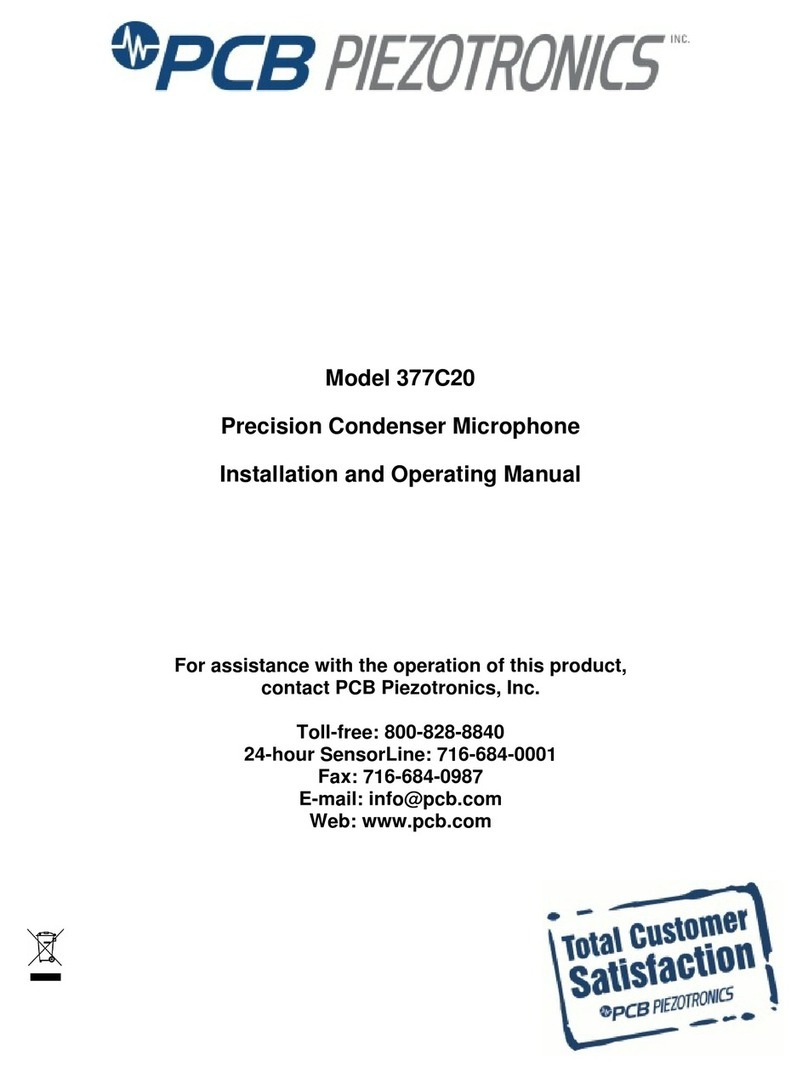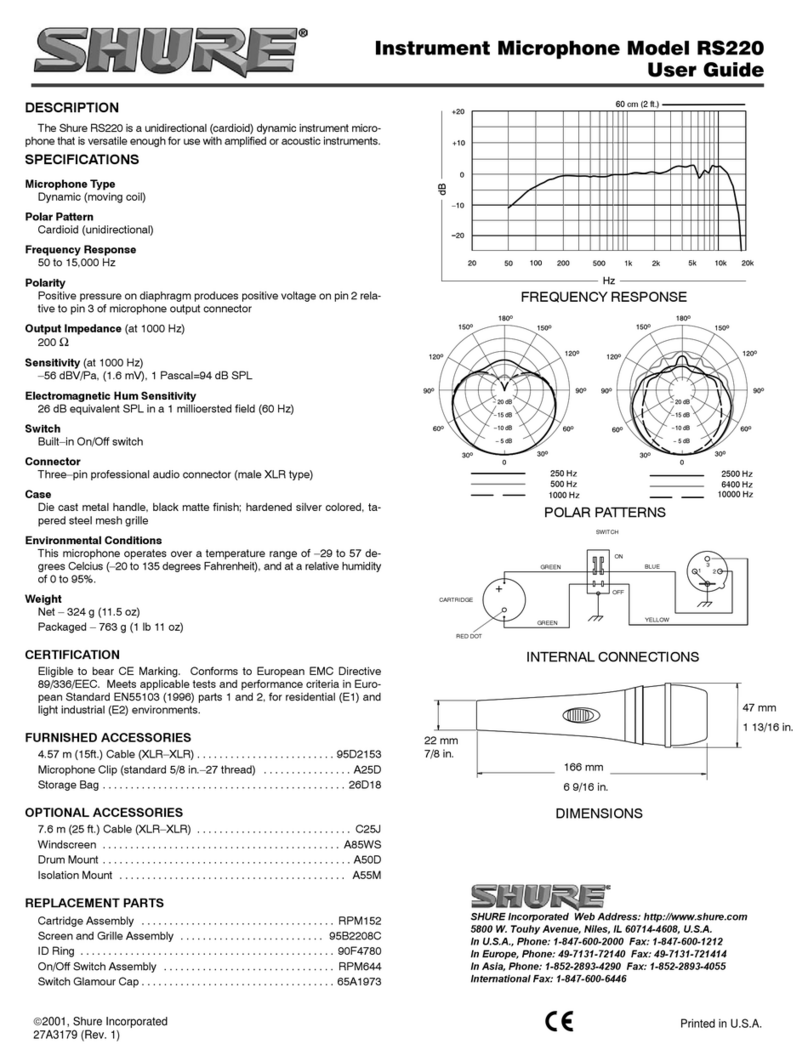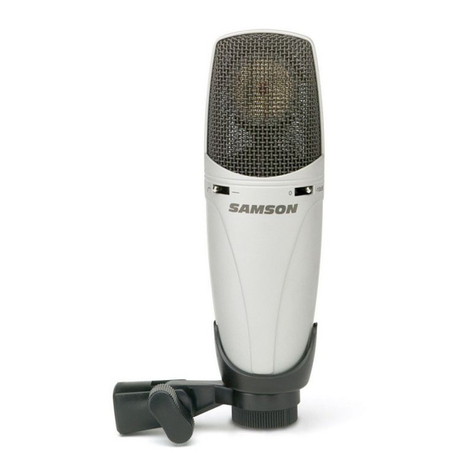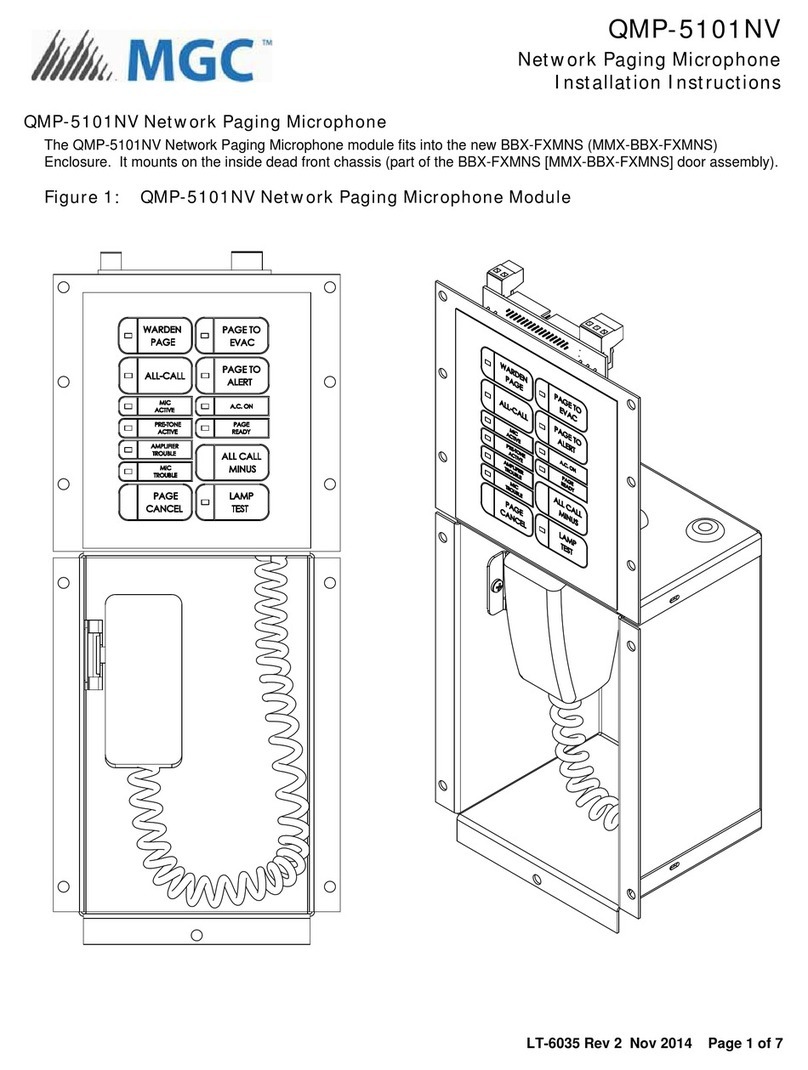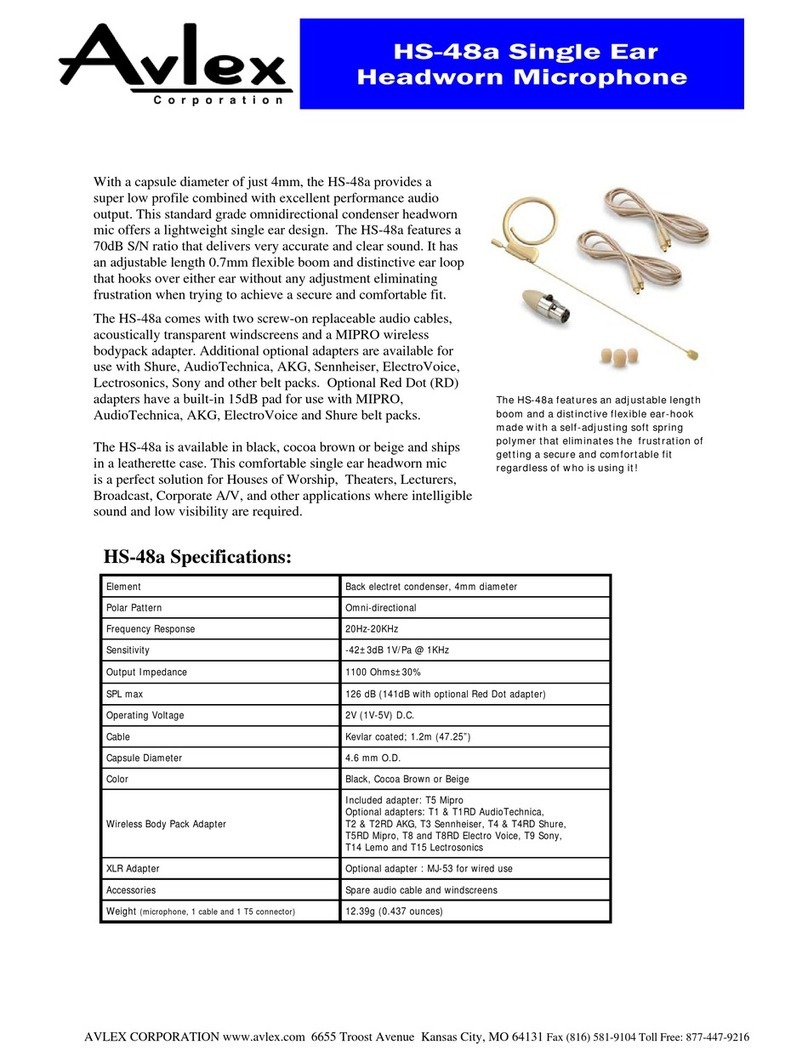2
User Manual - EN
Thank you
We would like to thank you cordially for choosing this sE microphone! This manual contains some
important instructions for setting up and operating your new equipment. Please take a few minutes
to read the instructions below carefully. We hope you will enjoy working with it as much as we
enjoyed designing and building it for you.
Most Sincerely,
Your sE Team
Brief Description
The H1 handheld live condenser is the ultimate stage and studio all-round performance mic for
handheld vocals. The ultra-smooth sounding condenser capsule has been voiced and tuned
specifically for live & touring applications, and provides a stunningly clear sound on any voice.
It utilized a specialized internal shock mount for extremely low handling noise –equivalent to that
of the best dynamic mics, while maintaining the sonic signature and performance of a high-quality
condenser.
The H1’s robust all-metal construction, stainless spring steel mesh grille and gold-plated XLR
contacts ensure durability and reliability with no corrosion for many years. The custom-voiced
capsule, tight production tolerances and high workmanship ensure excellent sensitivity, high-end
sound quality and superb consistency.
What’s in the box
Your packaging should contain the follow items. If anything is missing, please contact your sE
Electronics dealer and let them know.
•H1 microphone
•microphone stand clip
•thread adapter
•user manual
•sE logo sticker
•carrying pouch
Tips for practical use
Point the microphone directly towards the sound source as much as possible to get a dry, direct
sound and high gain before feedback.
The closer the distance from the microphone to the source, the more bass you’ll get (“proximity
effect”). Use this to your advantage when you want it, and be aware of it when you don’t.
The fewer microphones you are using on the stage the better. Use just one microphone per source
to minimize to risk feedback.
Make sure the microphone is positioned behind the PA speakers to reduce the risk of feedback.
If several microphones are necessary (e.g. choir miking) apply the 3:1 rule: The distance between
the microphones should be at least three times the distance of each microphone to its source.


